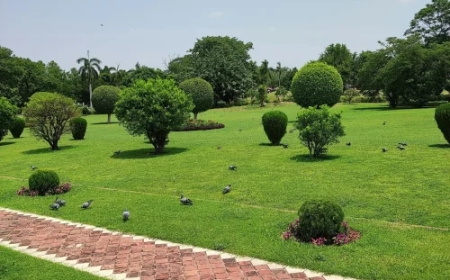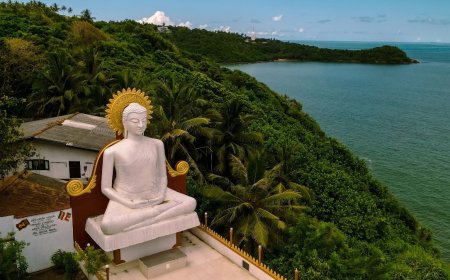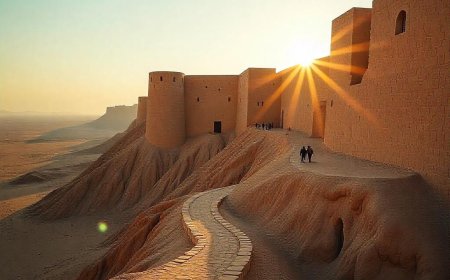Exploring the Culture and History of Spiti Valley
Explore the rich culture and history of Spiti Valley, from ancient monasteries and traditional villages like Mud to the iconic Kunzum Pass. Discover spiritual traditions, festivals, and the heritage that defines this Himalayan gem.

Introduction
Spiti Valley is often celebrated for its dramatic landscapes, challenging treks, and adventure-filled roads. But beyond the rugged terrain lies a quieter, deeper storyone of ancient traditions, spiritual heritage, and communities that have lived in harmony with nature for centuries. Nestled in the high-altitude deserts of Himachal Pradesh, Spiti is not just a place to visit but a living museum of Tibetan Buddhist culture and Himalayan history.
If you're planning a Spiti Valley tour from Chennai, take the opportunity to go beyond sightseeing. This article explores the rich cultural and historical tapestry of Spiti Valleyfrom ancient monasteries to the timeless charm of Mud Villagethat makes the region one of Indias most meaningful travel experiences.
Historical Significance of Spiti Valley
Spiti Valleys history stretches back thousands of years. The valley served as a crucial link between India and Tibet, lying on ancient trade routes that carried salt, wool, and other goods across some of the harshest terrain in Asia. This long-standing interaction with Tibet has deeply influenced Spitis culture, religion, and architecture.
Key Monastery: The Spiritual Heart of Spiti
At the heart of Spitis historical and religious life is the Key Monastery, perched dramatically on a hilltop overlooking the Spiti River. This 1,000-year-old monastery is the largest in the valley and has served as a center for learning and meditation for centuries. Inside, you'll find ancient thangkas (Tibetan Buddhist paintings), manuscripts, and statues, all echoing the rich legacy of Tibetan Buddhism.
The monastery has survived invasions, earthquakes, and the test of time, yet it remains active and vibrant, housing around 300 monks. Visitors are often struck by the sense of peace and spiritual energy that radiates from the placemaking it a must-visit on any cultural itinerary.
Mud Village: A Window into the Past
One of the best places to experience Spiti's history and culture in its most authentic form is Mud Village. Tucked away in the remote Pin Valley, this village is known for its traditional mud-brick homes, prayer flags fluttering in the wind, and a serene, untouched atmosphere that feels far removed from the modern world.
Mud Village plays an essential role in the cultural landscape of Spiti. It serves as the gateway to the Pin Valley National Park and is often a base for trekkers heading toward the Pin Parvati Pass. But even if you're not trekking, spending a night or two here gives you a chance to witness the simple, sustainable lifestyle that Spitis people have followed for generations.
The residents of Mud Village continue to live in harmony with the natural elements, relying on solar power, traditional agriculture, and community-based living. Homestays in the village offer authentic local food, warm hospitality, and conversations with locals who are eager to share stories about their land and heritage.
Cultural Practices and Traditions
The people of Spiti Valley are deeply spiritual, and their lives are woven around Buddhist teachings, seasonal changes, and communal celebrations. Spitis population is predominantly Buddhist, and every aspect of daily lifefrom home design to food preparationreflects centuries-old beliefs and customs.
Monastic Festivals and Lama Dances
One of the most vibrant expressions of Spitis spiritual culture is its monastic festivals. Among the most famous is the Cham Dancea ritualistic performance where monks don elaborate masks and robes to represent deities, demons, and protective spirits. These dances are held in monasteries such as Dhankar, Tabo, and Key, attracting both locals and curious travelers.
The dances are not merely performancesthey are spiritual rituals believed to ward off evil and bless the land and people. Visitors during these festivals witness the valley at its most colorful and joyous, as music, chanting, and incense fill the air.
Agricultural and Seasonal Celebrations
Given the valleys dependence on agriculture and limited growing seasons, the locals celebrate harvests and sowing periods with equal enthusiasm. Festivals such as Losar (Tibetan New Year) and Gochi (a celebration for children born in the past year) are community-focused events filled with dancing, feasting, and traditional attire.
These festivals are often hosted in villages like Mud, where close-knit communities gather to offer prayers, cook together, and strengthen social bonds.
Preserving Heritage Through Daily Life
Spitis cultural legacy is not confined to monuments or festivalsits embedded in daily life. From the mud-brick homes that keep residents warm during freezing winters to the mani stones (inscribed with Buddhist mantras) that line the paths between villages, every detail tells a story of resilience and spiritual devotion.
Local crafts, such as weaving and thangka painting, continue to be practiced, and many visitors purchase handmade souvenirs from women-led cooperatives in villages like Kaza and Mud. These not only support the local economy but help keep traditional art forms alive in the face of modern change.
Conclusion
Spiti Valley offers more than just stunning views and adventurous treksit offers a deep, spiritual connection to a way of life that has stood the test of time. From exploring ancient monasteries like Key and Dhankar, to walking the quiet lanes of Mud Village, every experience brings you closer to understanding Spitis soul.
For those planning a Spiti Valley tour from Chennai, immersing yourself in the valleys rich history and culture will turn a scenic trip into a transformative journey. Be it through spiritual rituals, community festivals, or conversations in a local homestay, Spiti invites you not just to seebut to truly experience a Himalayan way of life that continues to thrive in the heart of the mountains.


































